
Opening the Stargate
When it comes to succeeding in the US R&B scene, nationality is no barrier. Just ask Norwegian songwriters Mikkel S. Eriksen and Tor E. Hermansen, members of Stargate.
Stargate are a Norwegian songwriting and production duo that have been storming charts around the world since 2006, particularly in the US where they’ve enjoyed a staggering 21 top 10 hits in the last four years. The duo have been so successful at beating the Americans at their own R&B game, in fact, that the New York Times, not normally known for going out of its way to cover behind-the-scenes songwriters and producers, wrote an extensive interview with them recently, where it was noted that Stargate’s hugely impressive achievements seemed a little incongruous given that its two members, Mikkel S. Eriksen and Tor E. Hermansen, are “wholesome-looking, milk-complexioned Norwegians… both shiny of scalp and beanstalk thin.” This isn’t exactly what one has in mind when one imagines people working in the American urban music genre, and the story goes that when singer, songwriter and occasional rapper Ne-Yo first met the duo in 2005, he refused to believe they worked in R&B. Luckily Ne-Yo looked beyond appearances, and soon afterwards the Norwegian duo and the American singer co-wrote the single So Sick, which went on to become a US and UK #1.
Since then Stargate have become first-call songwriters and producers for American R&B and pop acts like Beyoncé, Rihanna, Lionel Richie, Chris Brown, Jennifer Hudson, Flo Rida, Mary J Blige, and many others. Their efforts earned them a Grammy in 2008 for Best R&B Song for Ne-Yo’s Miss Independent, and several other nominations, including this year, in the Album Of The Year category, for their work on Beyoncé’s I Am… Sasha Fierce. (The duo co-wrote and co-produced two songs on the album, including the single, Broken-Hearted Girl.) Stargate now have a studio in Jay-Z’s prestigious Roc-The-Mic studio in New York, and have also joined forces with the rapper in a publishing company and record label called StarRoc.
Stargate’s ascendancy to the top of the American music scene in 2006 may sound too meteoric to be true, and it indeed turns out that Eriksen and Hermansen spent many years cutting their teeth in the Norwegian and British music scenes between 1999 and 2004. Stargate – at the time a trio with third member, Hallgeir Rustan – enjoyed 40 top 10 hits in the UK alone, before deciding to risk all and set off across the Atlantic.
Eriksen and Hermansen set up shop in a room at Sony Music studios in the beginning of 2005, and initially met with little success, until a chance meeting with Ne-Yo in the corridors of the studio later on in the year. So Sick changed everything for Stargate and Ne-Yo, and together they wrote a further three songs for his debut album. In 2006, they were responsible for two more international monster hits: Rihanna’s Unfaithful and Beyoncé’s Irreplaceable. The following year Stargate co-wrote and co-produced worldwide hits like Beyoncé and Shakira’s Beautiful Liar, Rihanna’s Don’t Stop The Music, and Chris Brown’s With You. The following year they had major success with Rihanna’s Take A Bow, and Ne-Yo’s Grammy-winning Miss Independent. In the last two years the tsunami of Stargate hits has given way to a slightly more surfable wave (which would still be the envy of most songwriters), with hits like Flo Rida’s Be On You, Beyoncé’s Broken-Hearted Girl, and early this year Mary J Blige’s I Am.
THE STARGATE TOUCH
Mikkel Eriksen on writing some of the Norwegian duo’s greatest hits

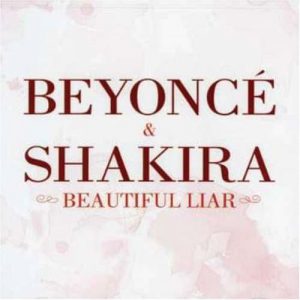
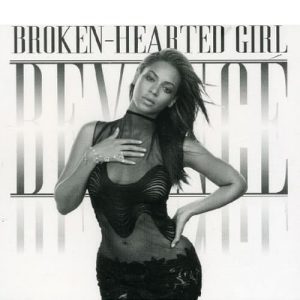
CHORDS & MELODY
It’d be hard to point to a signature Stargate style. There is, however, a common thread that unities the duo’s songs. Rather than a focus on beats, sonic experimentation or attitude, their songs tend to succeed on the more old-fashioned qualities of melody, chord progression, and emotion. In addition, their productions are always wholly supportive of the song, many of which are minor key ballads or medium-tempo numbers that allow the singer space to shine. It’s understandable that all this makes Stargate popular with singers. What’s more, Hermansen and Eriksen also almost always co-write their hits with fellow songwriters, and often with the singer, which gives the latter even greater scope to make the song his or her own, not to mention that it also allows for a share in the royalties.
Eriksen appears proud of Stargate’s non-ego approach, and explains that it’s the result of the epiphany that lay at the heart of the creative outburst that followed meeting Ne-Yo in 2005. Eriksen: “So Sick was definitely an eye-opener for us in that it really worked to have the singer write the lyrics. When we lived in Europe we used to write most of the lyrics ourselves. We’d hum melodies into a dictaphone and I used to sing on our early demos, which taught us about what makes a good vocal melody. These days we really enjoy working with American lyricists and top writers. They’re on another level lyrically, and this gives us the space to focus on writing and recording, which is the part we love the most. We put a lot of instrumental melodies in our music that singers and lyricists can use and adapt. Our goal is also to inspire singers to come up with their own melodies, which we can then edit.
“The other thing we discovered with So Sick is how simple a good song can be. You don’t have to have loads of vocal harmonies and overlapping lines in the background. The most important thing is to have one great lead vocal throughout the song. You can sprinkle it with all sorts of stuff but you try to keep it focussed on the lead vocal and make sure the melody and lyrics are great.”
GEAR AT THE GATE
Like more and more hit makers these days, Stargate weave their magic on a state-of-the-art ProTools system, and little else. Says Eriksen, “As you know, everything is moving towards smaller production facilities these days. You don’t really need big consoles or lots of outboard anymore to make a good sounding record. We have a G-Series SSL at Roc-The-Mic, but we only use four channels of it: two for ProTools and two for the iPod. We do everything in the box and the desk is just there to make our room look like a real studio (laughs). Back in the days in Norway we used quite a bit of outboard, but now it’s all about plug-ins. I think we were one of the first to move to ProTools for song writing… that was 10 years ago now. Before that we’d been using Cubase for the previous 10. Cubase was much better for MIDI at the time, but because we were doing the vocal recording in ProTools, it eventually made more sense to work on just one platform, and ProTools was the more convenient of the two. In the end it doesn’t really matter what you use. It’s all about ideas now, not the equipment. Anyone with a laptop and a small keyboard can create records that sound just as good as the ones on the radio.
“Tor and I both play keyboards, and we have all the different Yamaha Motifs: the ES, the EXS, and so on. The Motif ES is my master keyboard. We also have the Roland Fantom and Fantom-G, and several older modules, like the Roland JV and Proteus 2000, but we rarely use them any more. These days we mainly use soft-samplers and soft-synths, the main ones being Digidesign’s Structure and Access Virus Indigo. We also use XPand! a lot and the new Transfuser software, which allows us to chop up and mess with the sounds. We have pretty much every soft-synth on the market, and several symphonic sample and drum libraries. Actually, it’s a real danger, having too much stuff and too many possibilities, which is why we often go back to our own sample libraries. But to be honest, we don’t really care whether we use a preset or our own sound. Often we start with a preset and modify it; at other times we create a sound from scratch. We don’t focus too much on the sounds – more on the ideas and the song writing.”
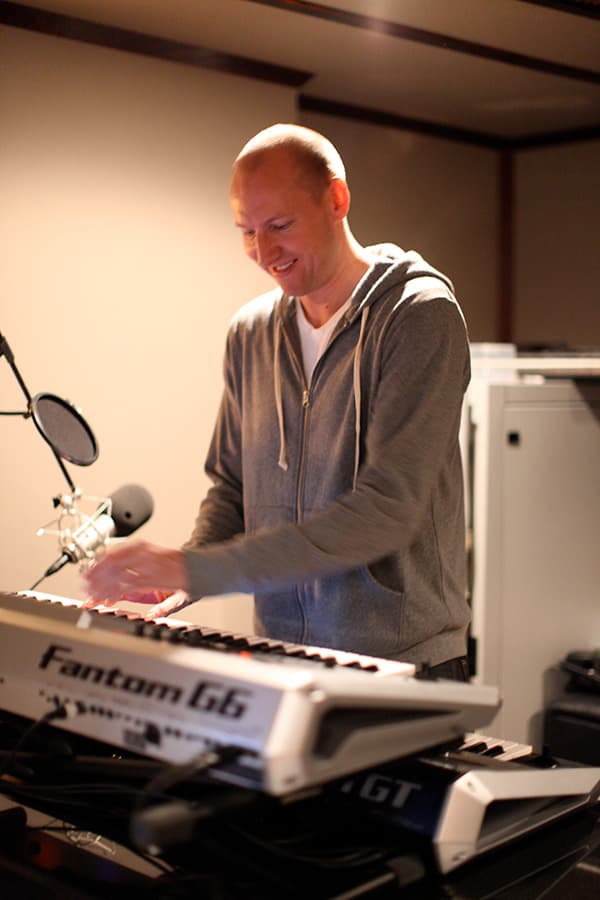


WRITING TOOLS
Stargate are thoroughly 21st century creators in that they record whatever they come up with directly into their DAW. No sonic notepads or demos here. “We only write when we’re in our studio,” asserts Eriksen. “Basically, Tor and I are standing in front of each other, each of us behind a keyboard, and we jam. We get sounds and we start playing melodic ideas and feels, and when one of us gets something the other likes, the other might say, ‘Oh, do that again,’ or ‘why not try this chord instead,’ and so on. We’re going for a unique feel, or melody, or chord progression, or an interesting sound – anything can be an inspiration, although we rarely start off with a beat. Most of the time we start with a melody or a chord progression. We put a lot of thought and attention into having strong melodies in our tracks, and the feedback we get from singers and lyricists is that they love that there are already so many melodies in the track they can use.
“Although we sometimes have ProTools running while we’re improvising, we normally don’t record anything at that stage. We generally prefer to develop a musical core that we refine and develop first, and it’s only then that we record into ProTools. From there we start layering, adding other sounds and melodies, a drum track, and so on. Then, later, we might change things around or strip things back, and only keep the three most unique elements.
SPONTANEOUS & QUICK
According to the New York Times interview, Stargate often write three or four songs a day. Eriksen admits that this staggering creative pace is normal for them. “We may have 500 song ideas a year, though good finished songs amount to about one or 200 per year. As I’ve said, we’ve developed our craft over a long time, so when we have an idea it’s easy for us to execute it. I can have the right sounds in five minutes, and we have very effective and quick ways of working without compromising quality. One thing that makes things more straightforward is that, by focusing on melodic ideas, we’ve learnt that we can keep tracks open and sparse. If a core idea is good enough, you don’t need five sounds doing the same thing. When a song is played on the radio and compressed by the station, the fewer elements you have in a track the better it sounds. In the R&B genre things sound better stripped down. For that reason we try to focus on simplicity and primary colours in our songs and arrangements. We use bright red and yellow and try to keep them separate.”
Another element that adds to the duo’s productivity is the fact that they prefer to write songs for the pure fun of it. Although they do write to order, it’s not their preference. Eriksen: “We sometimes have specific sessions for an artist or a record label, but experience has taught us that the best stuff comes when we don’t think of any artist in particular. We just write songs, and it’s only later that we might find out who the song’s best suited to. If we were to write a song for Whitney Houston, for instance, the risk is that we might limit ourselves by thinking, ‘it has to be in this genre – she sings like this, and it can’t sound like that.’ It’s better to just create something that you love, and then afterwards think, ‘oh, this would be a good song for Whitney Houston.’ It’s also often the case that songs work in ways that you initially didn’t think would make a good fit. Irreplaceable, for instance, wasn’t written for Beyoncé, and nobody seemed to think it would fit the R&B genre – it was just too different to be played on the radio. Even after Beyoncé recorded it people were still convinced radio stations wouldn’t
play it. And then suddenly everybody was playing it! A good song is a good song, no matter how you wrap it.”

WRITTEN & RECORDED IN TWO HOURS
Stargate and Ne-Yo’s commercial and creative American breakthrough, So Sick, has since become a blueprint for the Norwegian duo’s way of working. The simplicity of the song is embodied in the basic chord sequence – Ebm, B, Abm, Db – and then a pedal B chord. Erikson traces the song’s genesis and how it shaped their working methods: “The song consists of a good feel in the harp sound, three drums sounds, an Indigo bass, and a lead synth – that’s it. We actually wrote the song in Ebm, because it’s very easy as keyboard players to just start something in Am or F or whatever and fall into a pattern, and just play the same chords over and over. So sometimes we choose to start a song in a strange key so you have to search and stumble across interesting things along the way. In the end the chord sequence in So Sick is pretty standard, but I don’t think we would have arrived at that choice of notes had we written it in another key.
“The song started with me playing the harp sound on the keyboard and a theme that was much longer. Tor then said, “Why don’t you just repeat the first section?” We tried that, and it really worked. Writing it was very spontaneous and quick; I think we wrote and recorded the whole track in 25 minutes! Ne-Yo loved it when he heard it, and he used the harp tune at the beginning of the song as the basis for his vocal melody, plus he wrote the lyrics in maybe half an hour. We then recorded what was intended as a quick demo of his vocal. I think he did one take for the verses and a couple of vocal overdubs, which took another half hour, and that became the actual vocal on the finished version. So the whole song took less than two hours, from improvising the first notes to the end result. It just shows that it doesn’t necessarily take long to create something great.”
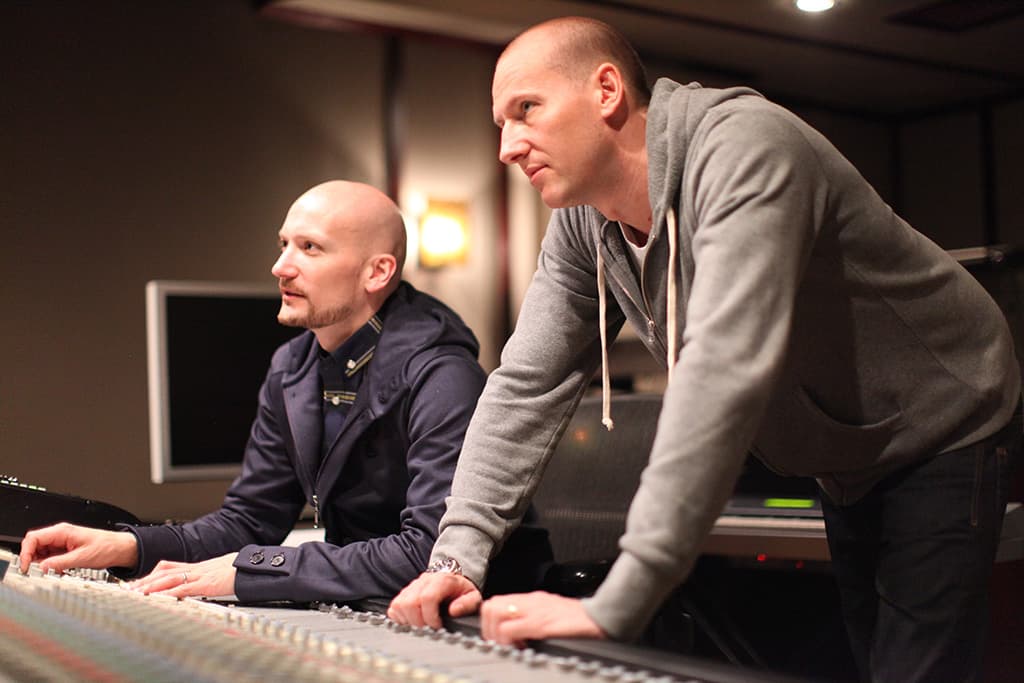
GREATEST FEELING
In addition to a penchant for simplicity, speed and filling their songs full of melodies, several other working methods and approaches emerged from Stargate’s experience of co-writing So Sick with Ne-Yo. There’s a total openness in writing songs together with others, as well as creating clear arrangements and structures without becoming attached to them. “When Ne-Yo first heard the song, the whole structure of So Sick was pretty much the way it is today. We always try to have the structure of our songs and the arrangements very clear in our recordings. We’ll have the verses and choruses and bridges and transitions complete. Of course a singer or another co-writer may want to extend or shorten parts of the song, but it’s much easier to do that if the song is already very structured to begin with. And in some cases we’ll completely change our backing after the singer has overdubbed his or her vocal. We might change the beat, or the chords, or completely re-arrange the song. In Take A Bow [a UK and US No.1 for Rihanna in 2008] for instance, our original track had an almost Asian feel, inspired by Ryuichi Sakamoto. It was much more left-field, and then after Ne-Yo wrote the lyrics and melody, we changed the whole beat and made the song more straightforward.
“We’ll often try left-field ideas that we later adapt. We constantly search for different sounds and different inspirations. You don’t want to be stuck in one lane and just repeat versions of your last hit record. We also sometimes use the considerable skills of Espen Lind and Amund Bjorklund, a Norwegian writing and production team called Espionage, who sometimes record guitars for us. They’re great song writers – they had the guitar idea for Beyoncé’s Irreplaceable, Rihanna’s Hate That I Love You and Chris Brown’s With You. We also sometimes use guitar parts by Bernt Rune Stray who, for instance, appears in the track Closer by Ne-Yo. He originally sent an idea to us in 6/8 – we sampled it, chopped it up and totally changed the feel. Sometimes it’s inspiring to use someone else’s starting point. We use ideas like that almost as a sample.”
For this very reason many Stargate-written and produced songs have an extended list of writing credits. Given Stargate’s commitment to reinvent themselves and their eagerness to write with many others in the process, it’s perhaps surprising that some critics have accused them of repeating an ‘acoustic-guitars-in-R&B’ formula, introducing it on Irreplaceable, and then allegedly repeating the idea on With You, Hate That I Love You, and Jordin Sparks’s Tattoo. Erikson seems relaxed about this criticism. In fact, the only hint of agitation comes when the discussion veers towards the question about whether Hermansen and he consciously tailor their work for the hit parades.
“With You and Irreplaceable both have strumming guitars and similar drum sounds,” acknowledged the Norwegian. “But the songs are very different. If you listen to any successful producer or writing team, it’s easy to hear that they have a certain expression and a certain sound. I don’t think anyone should be afraid of that. You’re searching for that unique sound all the time, and when you find it, you shouldn’t be afraid to re-use it. But it’s not a commercial decision. We don’t think of the pop market while we write. Even from very early on in Norway we had critics saying that we were writing music from a formula, but basically we just write the music that we love, and we’ve always loved pop music. It’s what comes naturally to us. We never think: ‘we have to make this sound right for the radio so that it will sell.’ The best stuff we make is the stuff we’re inspired by. That’s our starting point, our motivation for doing it. The greatest feeling is when you start the day with nothing, and by the end of the evening you’ve created something special.”
In talking about pursuing a unique sound, Eriksen steered the conversation to the other aspect of Stargate’s work: they produce all the songs that they (co-)write. “In fact, we also engineer almost everything in our songs,” adds Eriksen, “apart from occasionally the vocals or the strings. But whatever is recorded in our studio I record myself. It’s so much quicker than telling someone to press record or explaining which takes to keep. Many artists are surprised that we do our own vocal engineering, but I’ve been doing it for 15-20 years and I’m very specific about how I want it. Getting a good vocal sound makes a big difference to the production. The gear I use depends on the vocalist, but we often use the Blue microphone, which we like a lot, and that goes into an Avalon compressor and from there straight into ProTools. We also love and use the classic Neumann mics and the AKG C12.
“I’ve also developed a handy technique for comp’ing vocals. While recording I mark the parts that are good and cut those out immediately and drag them down to a new track, while remembering what was great about that section. Once I have enough sections, I drag all of them to a new track, and get the transitions right and have a listen. If it’s good enough we move on. If not, we record more. It’s a much more efficient way of comp’ing than recording 20 tracks and then having to listen to all of them again before comp’ing them.”
VOCAL CHORDS, NOT VOCAL CHAIN
Eriksen is by all accounts a tech-head, so it’s interesting to hear him – time and time again – de-emphasise the importance of gear. Just like he’d reckoned that everyone with a laptop and a keyboard can get the same quality of productions as can be heard on the radio, he also enthusiastically relates how recording vocalists in the US led to another revelatory ‘the-gear-doesn’t-matter’ experience. “We worked with a lot of great singers in Europe, and were always trying to get that sparkling and fat American vocal sound, but we never managed it. We always wondered how they did it and when we finally came here to New York we discovered what it was. It wasn’t about the microphone chain, or the microphone, or the EQs – it’s about the vocalist. The best vocalists in the world just have that sound in their voice. Basically, when I’m recording vocals nowadays, it’s really just a matter of not f**king it up. I’ll usually have a very simple vocal chain and will just add a little bit of sparkle, some compression and an effect of choice, and it will sound great. For this reason we’re not very particular about the gear we use.”
Moving on to the last stage of the production process – mixing – legendary British mixer Spike Stent recently commented that the differences between British and American pop is largely about the mixing stage. Eriksen agrees. “Somehow the music sounds warmer and richer in America, and more bass heavy, and they have a fantastic vocal sound. In England the music tends to be more mid heavy, and sharper. It’s like a different expression. I don’t know exactly why this happened, because we all use the same equipment. It must be just a matter of taste. All I know is that our sound has changed since we came to America, and we’ve found our own expression here.”















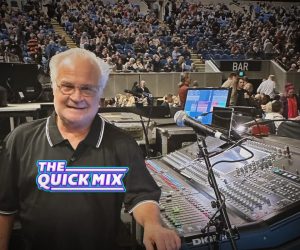


RESPONSES